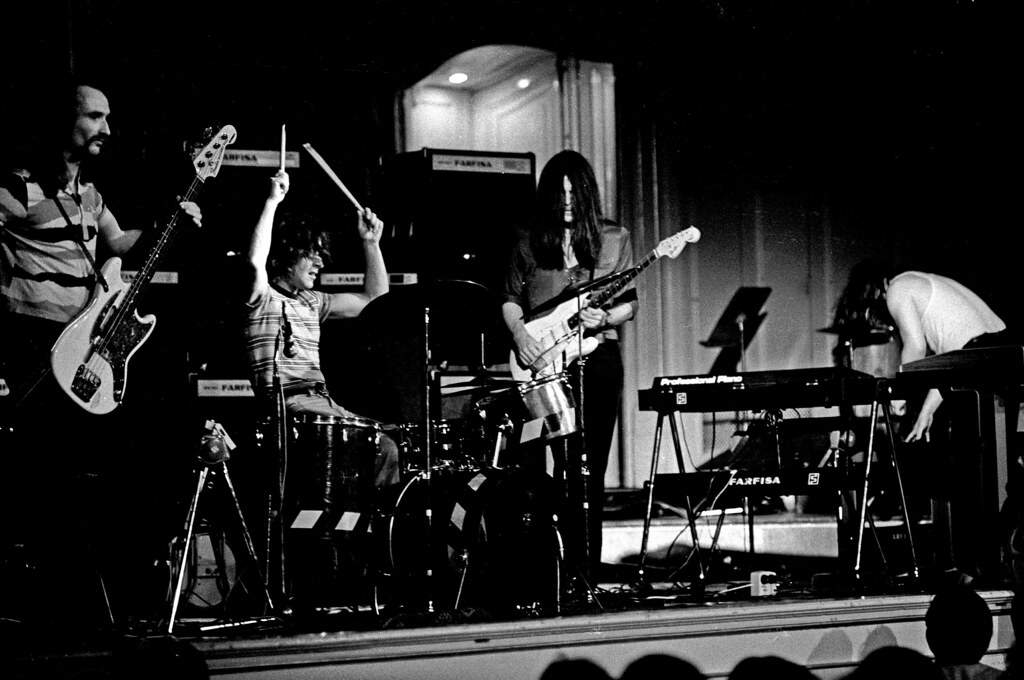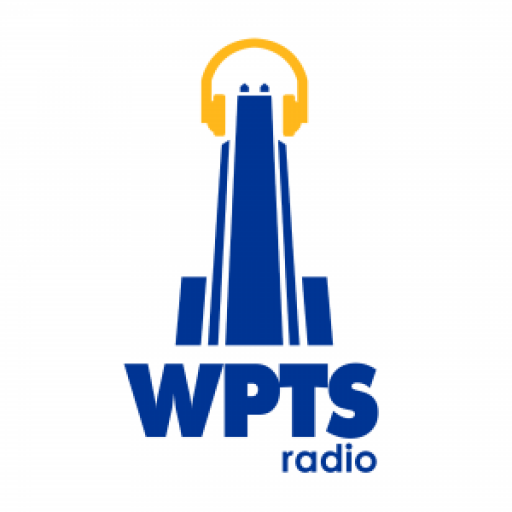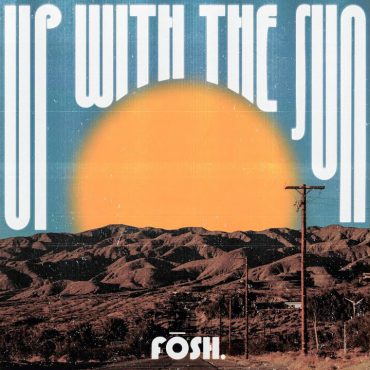Listeners:
Top listeners:
-
play_arrow
WPTS-FM

CAN Live in der Mushalle Hamburg, 1972 | Photo by Heinrich Klaffs | License
by Everett Cannon
Few genres are as influential yet underappreciated as krautrock. From Pavement to Kanye West, countless artists have found influence in this experimental rock subgenre. Originally called “Komisch” or Cosmic Music, Krautrock started off as an offshoot of psychedelic rock in post-WWII Germany. Artists at the time wanted to make music that wasn’t connected to traditional German music or current American pop music.
Fundamental/Cornerstone bands
A handful of big names come to mind when talking about Krautrock. One of the first bands I got into was NEU! and their debut self-titled record. The opening track Hallogallo perfectly encapsulates what Krautrock music is about. The driving motorik drums, rhythmic repetitive bass line and psychedelic reversed guitar lines make this song shine.
CAN is another band that is inevitably mentioned in the same breath as Krautrock. Their 3-album run of Tago Mago, Ege Bamyasi and Future Days is effectively flawless in my opinion. Ege Bamyasi is the most popular of these, and for good reason. It’s experimental without getting too abrasive and has a good mix of longer meandering songs and concise digestible tracks. Personal highlights include “Soup” and “Vitamin C”. The musicianship on these records is second to none; from Jaki Liebezeit’s influential drumming to Damo Suzuki’s iconic yet challenging vocals, the band is even greater than the sum of its parts.
Two groups that explore the more electronic side of Krautrock are Harmonia and Kraftwerk. Both groups were pioneers of electronic music and would shape the landscape of music in the following years by influencing prolific musicians and producers like Brian Eno, David Bowie, and David Byrne, just to name a few. Harmonia’s debut Musik von Harmonia is a solid example of these early electronic experiments, as is Kraftwerk’s Autobahn. Both groups might sound sparse by today’s standard of electronic music, but considering they both started in the early 70s, it’s easy to see how forward thinking and influential they were.
There are too many important artists to talk about at length, so for some further listening here are a few rapid-fire classic recommendations. Amon Duul II has an incredibly interesting history, and their debut Phallus Dei is considered one of the first Krautrock records, though their album Yeti is my personal favorite. Faust started their time as a very experimental group but leaned into more digestible tracks on their album IV. Cluster is another group that experimented with electronic instruments, and whose members went on to form Harmonia. Finally, Guru Guru is a psychedelic group that leans heavily into Acid-Rock stylings.
Contemporary Artists and the Current State
Given the loose genre definition and the highly important geographical/historical connection Krautrock has to Germany in the 70s, it’s slightly disingenuous to call any modern bands Krautrock groups. That said, you can hear the influence all over modern music, especially modern Psychedelic-Rock.
Neo-Psych giants King Gizzard and the Lizard Wizard wore their Krautrock influence proudly on their early records. On the cover for their album Float Along Fill Your Lungs guitarist Joe Walker is wearing a NEU! shirt, and the influence is heard from the start of the first track “Head On/Pill”. With its runtime of over 15 minutes, linear structure, and classic motoric drum part, it has Krautrock influence all over it.
Osees are another Neo-Psych group that are hugely influenced by Krautrock, even going as far as to borrow lyrics from CAN songs all over their catalog. Their 3 album run of Orc, Smote Reverser and Face Stabber all take clear inspiration from bands mentioned earlier, but for my money, I would have to recommend their record Carrion Crawler/The Dream, with the titular track “The Dream” as well as “Contraption/Soul Desert” being great examples of their Komisch influence.
The influence of Krautrock can be heard throughout Stereolab’s discography. They make heavy use of repetition, long instrumental sections, tape manipulation, simplistic synthesizers and locked in drum grooves, all to great effect. For an example of a more guitar-driven record I would recommend their record Transient Random-Noise Bursts With Announcements; for those seeking something more electronic I would recommend their album Dots and Loops.
Once you’re familiar with Krautrock, it becomes easy to hear its influence all over modern music, even in areas you wouldn’t expect. I’ve grown to love these records, not despite their quirks, but because of them. For anyone who’s made it this far I’d heavily encourage you to listen to some of these records and appreciate them for what they are. For those who want to learn more about the history of the genre, I’d recommend the BBC documentary Krautrock: The Rebirth of Germany. These groups have shaped the way I listen to and appreciate music, and I hope they do for you as well.
Written by: wpts07
2024 Everett Cannon krautrock Starter Packs
Similar posts
Post comments (2)
Now Playing



Mandy on March 16, 2024
loved this read!!! didn’t realize how much krautrock influenced stereolab but it makes total sense
Liam on March 27, 2024
I loved this article! CAN and Kraftwerk forever!!!